Dairy farming is an agricultural business involving milk production from domestic animals. Animals used to produce milk on dairy farms are called dairy animals. The dairy business covers 1.74 million hectares and plays an essential role in every regional economy. Let’s check out more information about dairy farming in New Zealand below.
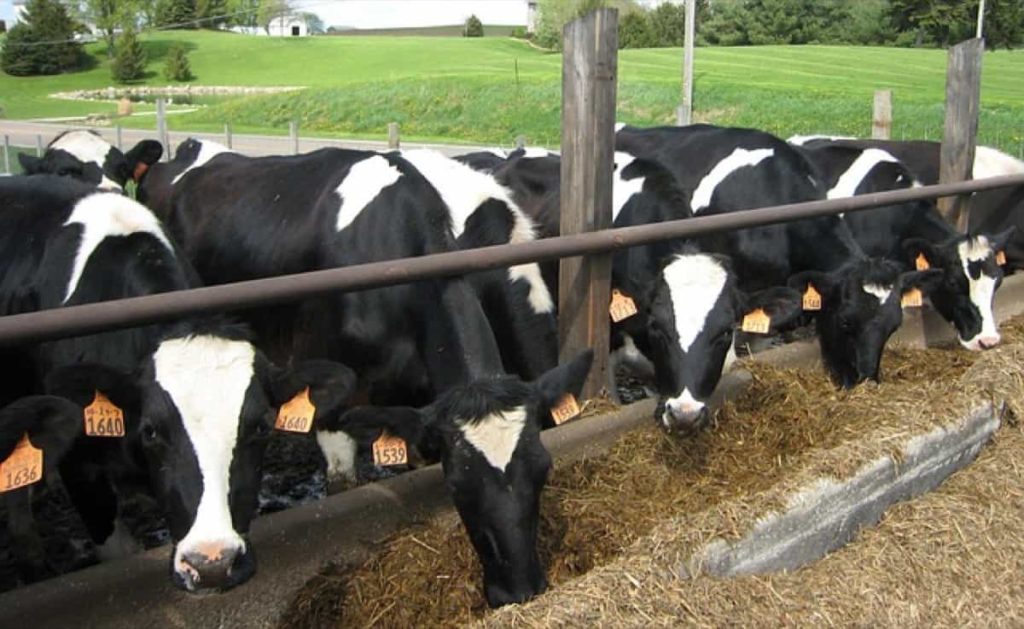
Dairy farming is a major New Zealand business and is New Zealand’s largest exporter. Dairy farms can vary in size – the average number of cows per farm is over 400. Some dairy farms may have more than 1,500 cows. In addition to milking the cow, you will have to do many other things around the farm. For example, you may need to:
- Monitor the health of the cow and treat the sick animal
- Measure the amount of grass and supplements available
- Put up temporary fences
- Use tractors and machinery to feed cows
- Feed the animals
NZ dairy features
The dairy farm business in New Zealand began from small beginnings in the early days of European colonization. New Zealand’s dairy industry is almost entirely based on livestock, with a population of 4.92 million dairy cows. Dairy farmers have been found to have higher levels of anxiety and irritability, depending on how they are measured, than the general population. New Zealand has a Dairy Farmer Wellness and Wellbeing Program funded by Dairy NZ and the Ministry of Primary Industries in New Zealand.
NZ Dairy features include;
- One of the lowest production costs in any major region producing milk globally;
- The industry leader in innovation and technology;
- Among the most efficient and efficient processing industries and supply chains;
- Favorable climate (ideal temperature and rainfall for growing grass); and
- Good access to emerging markets.
The dairy industry in New Zealand
New Zealand Dairy Farming is known for its low-cost, high-quality pasture production system and high technical expertise. Recently, this position has come to an end as a result of rising land and labor costs. There are less than 5 million dairy cows in New Zealand’s more than 11,000 dairy herds. They bring about ً 19 billion annually to the national economy. Dairy farms in New Zealand are now more sophisticated, with business operations using high-tech systems to assist in decision-making, budgeting, and overall productivity.
The New Zealand Dairy Career Program is unique because it is a fully inclusive training program that provides settlement and ongoing care. It combines industry best practices and practical and formal study programs on job learning that give you industry knowledge and valuable expertise. With an annual export of over $17 billion, the dairy industry is New Zealand’s largest exporter.
New Zealand’s 12,000 dairy farms produce more than 18 billion liters of milk annually, with a total of 1.7 billion kilograms of milk solids (protein and fat). The dairy industry in New Zealand is a major partner in the national economy (7% of GDP). The current major problem for the industry is the lack of cheap, highly nutritious feed for high genetically qualified cows for milk production. Poor productivity of these high-capacity Holstein-Friesian cows; quantity and skill of farm labor; and the environmental consequences of deep dairy farming.
Benefits of dairy farming in New Zealand
- Longevity: Cow herd life in New Zealand is one of the longest in the world, averaging more than 4.5 milking per cow, and unlike most countries, the phenotypic trend is to increase herd life.
- Production efficiency: Production per kg / live weight continues to increase. Modern New Zealand cows, despite being about the same size, produce 50 kg of solid milk yearly compared to cows a decade ago. High genetic cows are more profitable for farmers.
- Environment and well-being: Animals with high genetic makeup divide most of the food they eat into solid milk and less waste. It means more nitrogen in cow’s milk is converted into protein instead of excreted as urine or feces.
In case you missed it: Equipment Needed for Dairy Farming: Small Dairy Machinery Details
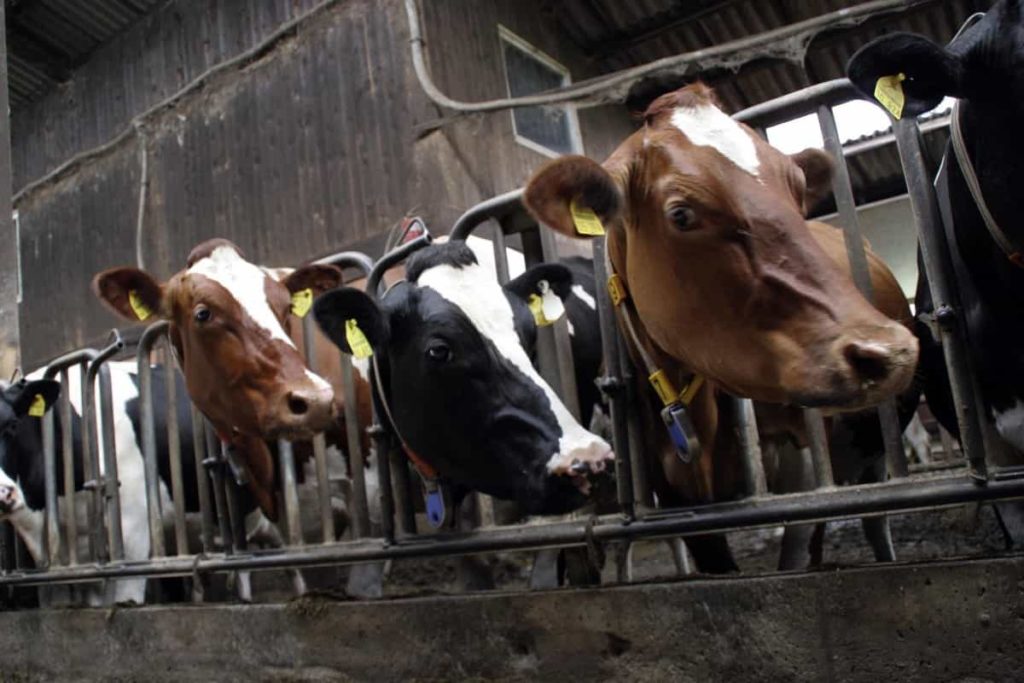
Climate conditions for dairy farming in New Zealand
New Zealand has a temperate climate that favors a variety of pastures and crops grown for dairy. Improvements in technology and irrigation have allowed dairy to spread to non-traditional dairy areas such as Canterbury. They have improved pastures and crops in arid areas such as the Northland. New Zealand dairy farms work with cows that live outside all year round.
So, whatever the weather, you must work out all year round. New Zealand’s weather is different in the summer and winter seasons. Because in the Southern Hemisphere, summers are between December and February, and our winters are between June and August. The northern regions are warmer than the southern regions – but not always. If you work on a dairy farm near the mountains, it will be much cooler than when you work on a dairy farm near the sea.
If you come from a tropical country, getting used to our changing climate and cold, wet and windy weather can be difficult. Dairy farming requires land that grows enough food to sustain the animals, with most farms supplying some feed and nitrogen during the season. The amount of food for your herd depends on the time of year. The cow milks an average of 250 days a year. It means that cows need milk, calves, and paddock in their winter diet. The land can be used:
- As part of a central farm around the milking shed and infrastructure, or
- As a support block that allows cows to graze that is not in the milk.
It is often the case for ground blocks separated from the main farm.
Farm operations in dairy farming in New Zealand
Dairy cattle feed mainly on grass, supplemented by hay, grass, and other crops during the winter and other times of slow pasture growth. Traditional dairy production areas are the country’s wetlands, including Waikato, the Bay of Plenty, Taranaki, Manawatu, Nelson, Tasman, and the West Coast. Still, increased irrigation has established dairy farms in arid areas such as Canterbury and Otago.
Approximately 56% of dairy farms in New Zealand are run by owners, while dairy farmers run 29%, and contract dairy farmers run 14%. The herd owner is the shareholder who owns the herd and is responsible for employing farm workers to receive a percentage of milk income (usually 50%). Variable order milkers do not own their herd and receive a low percentage (usually 20-30%) of milk income, while contract milkers pay a fixed price per unit of milk.
Land selection for dairy farms in New Zealand
- Select land or area for dairy farms that is elevated from the surrounding.
- Avoid low ground and waterlogged regions.
- The soil of the selected land must be fertile as most of the land will be used for fodder cultivation.
- There must be a good communication for the dairy farm.
- The selected site should be close to the veterinary hospital or artificial insemination center.
- The proposed dairy farm must be supplied with electricity.
In case you missed it: Dairy Farming in Germany: Breeds, and How to Start
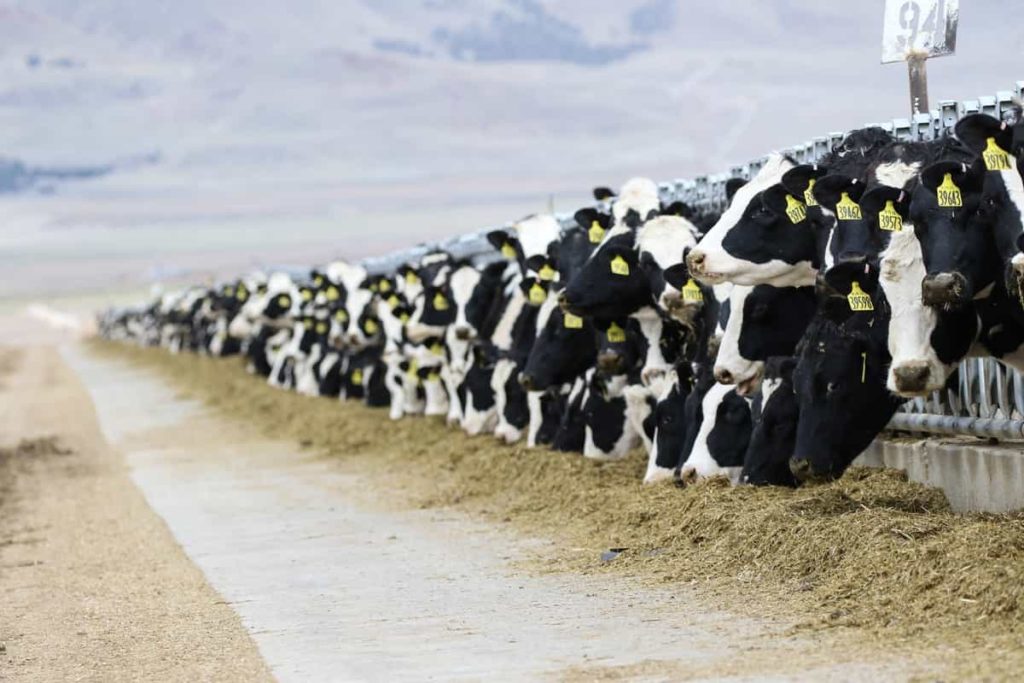
Why dairy farming is important in New Zealand
Dairy farming is widely used in New Zealand and is a major partner in our economy. However, cattle adversely affect the environment; the impact depends on the animal’s type, size, and density. Dairy cattle have an environmental impact than cattle, and both have more impact than sheep. Cattle, especially livestock, emit methane, which contributes to climate change. Cattle can adversely affect local biodiversity and soil health.
Water quality can be affected, as nutrients, sediments, and bacteria from urine and feces can flow into rivers, lakes, and groundwater. It can affect the aquatic ecosystem’s health and the recreational and cultural values of rivers and lakes. It is well known that over the next 50 years, food production must double to meet the world’s growing population and demand for high-protein foods.
On top of that, in emerging economies like Asia, there is a growing demand from the growing middle class, demanding more high-quality dairy foods. New Zealand is a pioneer of performance on the farm, and its products are well regarded as world-class. This demand underpins tremendous growth in dairy production in New Zealand.
Dairy breeds in New Zealand
Today in New Zealand, different breeds of dairy are used for farming. Finding a breed of cow suitable for your business can depend on many factors like the type of milk, the amount of fat and protein in their milk, the longevity, and hardness of the cow, milk production, feed intake, farm size, and the resources available.
Some important dairy breeds are Holstein-Friesian (47%, though declining), Jersey (15%), Ayrshire (2%), and some minor breeds such as Guernsey, Brown Swiss, and Meuse Rhine Issel.
Ayrshire
Ayrshire cattle originate in southwestern Scotland’s Ayrshire and are found in dairy herds worldwide. Ayrshire is usually red and white, ranging from deep to light shades. They are considered a medium breed, with cows weighing between 500 and 600 kg.
Brown Swiss
Brown Swiss cattle, also called Braunvieh, are the oldest of all dairy cattle, dating to about 4,000 years old. Brown Swiss breeders benefit from the best proportion of protein in any breed of dairy milk, which is ideal for cheese production.
Fleckvieh
They are known for their longevity, udder health, somatic cell count, fertility, and lactation rate, as their lactating properties have been emphasized in recent years. They also provide an excellent calf for the meat industry, either purebred or more likely to cross with other dairy breeds. They are an applicable breed and have spread all over the world. They are known for their teat health, longevity, somatic cell count, adaptation, fertility, and breastfeeding speed.
Through breed development in recent years, Fleckvieh’s milk production has begun to compete with pure milk-producing breeds. These cattle are widely used in the meat industry, either purebred or crossbred with other breeds.
Jersey cows
Jersey cows make up about 10% of all dairy cows in New Zealand today. Jersey cattle are famous for dairy farming in many countries of the world.
Guernsey
They are known to be effective in converting grass into milk, a rich yellow color, and their softness, ease of calving, health characteristics, adaptation to different seasons and management systems, and their due to excessive flow of milk. Guernsey produces high-quality milk while consuming 20% to 30% less feed per kg of milk produced than large dairy breeds. Other characteristics include good adaptation to the management system and climate, ease of calving, easy-going temperate nature, and high milk flow.
In case you missed it: Dairy Farming In Indonesia: How to Start, Industry, Market, and Breeds
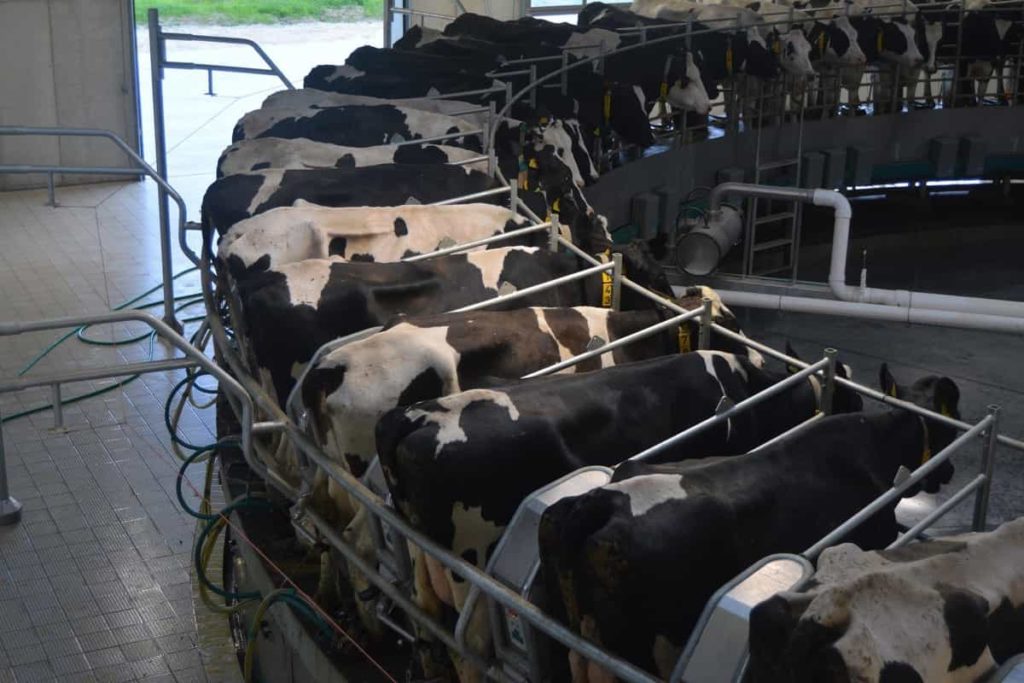
Holstein Friesian
The Holstein Friesian is the most common purebred dairy cow, with about 10 million of the 270 million dairy cows registered globally. Holstein Friesian is the most popular purebred breed in the world and makes up 35% of all dairy cow breeds in New Zealand. The most popular dairy cow, Jersey, yields less than half the average of Holstein Friesian.
Milking Shorthorn
The Milking Shorthorn herd was established by 1840 and remained the most popular dairy breed in New Zealand until the 1920s, when Jersey overtook it. Their numbers have dwindled since the breed’s rise, but they can still be found in all parts of the country and worldwide. They are known for their longevity, durability, ease of hatching, and fertility, proving to be versatile animals suitable for various production environments.
Health and welfare for dairy animals in New Zealand
New Zealand’s dairy systems already meet the need for breastfeeding in good health, but constant vigilance is needed at both the genetic and managerial levels. Farmers are already adopting technology to reduce environmental stress using dairy and stand-by sprayers, although some people provide shade protection even though it provides physical protection.
Long walks in large herds can be partially solved by milking once a day while grazing remote paddocks. Using stand-by pads or other forms of housing requires caution as they can exacerbate health and well-being problems if not properly designed and used. Most farmers want to ensure the well-being of their cows and work hard to get it, but they need technology that will enable them to grow herds and well-trained workers and grow. Enable to meet this responsibility in terms of input costs.
There are specific requirements around taking and allocating water in each area, but as a rule:
Dairy animals need access to fresh water in all paddocks, and shelter from heat and weather conditions are all permanent. Waterways need to be fenced to ensure that animals are kept out; nutrient management is very important for dairy farms to minimize the potential effects of fertilizers on water quality. Some farms rely on rain as a water source to grow plants and crops, while others have irrigation systems to grow their pastures and crops.
Milk supply in New Zealand
New Zealand Dairy Farming has traditionally used a spring-centered calving pattern to synchronize herd food demand with pasture development and grazing on milk peak production. But all the cows have to be fed completely. This system ensures efficient use of pastures and gives a full break to milking cows for 1-3 months in late autumn and winter.
However, this system creates an unequal flow of milk to processing plants. The spring peak volume means New Zealand uses the plant capacity less efficiently than other countries producing year-round milk. New Zealand’s dairy processing factories use state-of-the-art equipment and economies of scale to achieve high levels of manufacturing efficiency.
However, factories still have a great opportunity to increase efficiency through a year-round milk supply further. New Zealand milk plays an important role in global food security as one of the world’s leading exporters of pure food; New Zealand plays a key role in global food security. New Zealand produces about 21 billion liters of milk each year.
That’s about 3% of the world’s milk production or the equivalent of two and a half million daily dairy surveys for 90 million people. As the world’s eighth-largest milk producer with a population of only five million, it exports more than 95% of New Zealand-produced milk to more than 130 different countries worldwide.
Investing in New Zealand dairy farms
NZ offers qualified investors the opportunity to invest directly in dairy farming in the best dairy areas of the country. The core business strategy is to buy quality land and invest in addressing factors limiting productivity, including soil fertility, drainage, irrigation, buildings, and management while achieving environmental growth. The dairy industry in New Zealand encourages smart self-starters who want to start a satisfying career.
In case you missed it: Dairy Farming in Poland: Breeds, How to Start
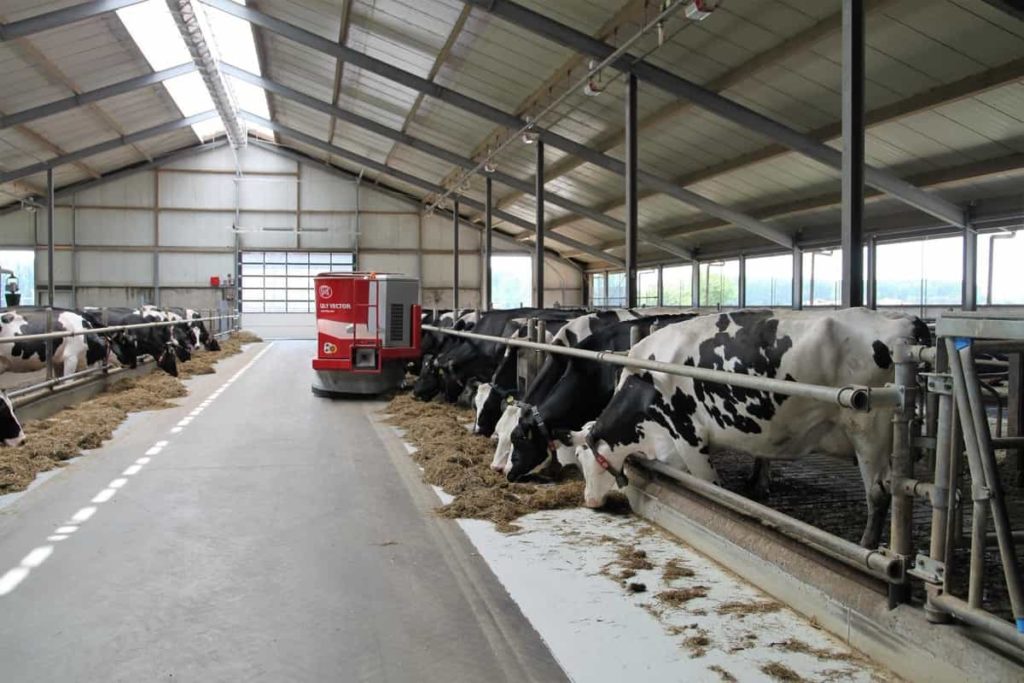
Like most successful people in any industry, successful dairy farmers are willing to try their best. For those who are determined and want to succeed, a career in dairy farming is an option that can be extremely satisfying, enjoyable, and financially rewarding. The recent trend towards large farms and large herds means that everyone who wants to enter the dairy industry has more employment and career options.
Problems and issues for dairy farming in New Zealand
The current major problems for the industry are the lack of cheap, highly nutritious feed for high genetically qualified cows for milk production. Poor productivity of these high-capacity Holstein-Friesian cows; quantity and skill of farm labor; and the environmental consequences of intensive dairy farming. The agriculture industry has responded to these challenges in the following ways.
- The increasing use of nitrogen fertilizers has increased pasture production, nitrate leaching, and nitrous oxide emissions from fields, leading to research on wintering pads, dietary changes, and nitrification inhibitors.
- Increasing the use of supplementary feeds has improved milk production per cow but has also increased the total variable cost of the farm, labor requirements, and nutritional losses, thereby improving feed utilization. Research for affordable feeds and Roman modifiers has been promoted. Poor reproductive performance of Holstein-Friesian cows with foreign genetics initially led to the greater treatment of reproductive interventions. Still, greater awareness of welfare issues has encouraged increased use of crossbred Holstein‐Friesian × Jersey cows to improve reproductive performance by heterosis.
- Using large herds and dairies initially allowed for more efficient use of labor. Still, persistent labor costs and availability problems led to some farms adopting once-daily milk and automatic milking system for animal systems.
- Future developments will include continuous improvement in quantity and feed quality for high-breed cows. Still, more emphasis will be placed on features such as feeding efficiency, health, and survival in the herd.
- Automating all farm work will be a major feature of future farms to reduce labor costs. Environmental compliance costs will increase in the short term unless research provides ways to reduce carbon and nitrogen losses from grazing and crop systems.
Some other challenges in dairy farming in New Zealand;
Firstly, the challenges of the farm are related to cow, pasture, environment and farm financing, and related breeding issues. Despite tremendous advances in dairy genetics, the industry is concerned about evidence of declining NZ dairy herds and rising levels of mastitis.
Secondly, environmental concerns also pose challenges to the industry. Problems range from competition for water resources, political challenges related to access to resources, determining the appropriate production response to climate change policies, and the growing concentration of farming with large real estate and property groups.
In case you missed it: How this Farmer Made 1 Lakh Per Month from His Dairy Farm: A Success Story
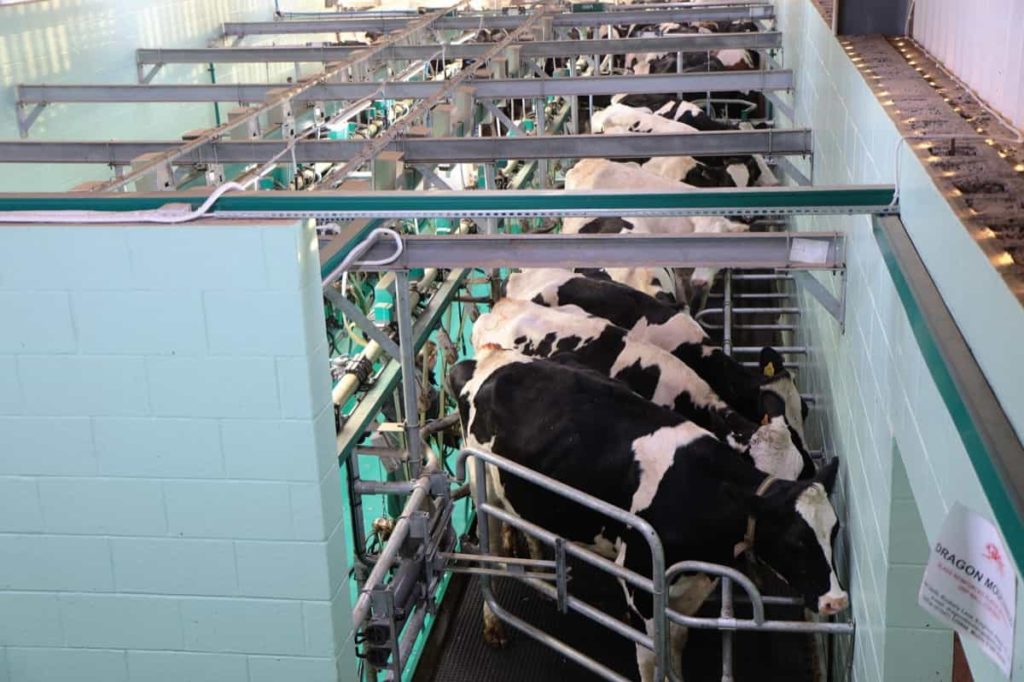
Thirdly, capital structure issues are currently debated with capital aspirations for global growth. Some New Zealand farmers are unwilling to reduce their property rights. The challenge of getting rid of the cooperative has increased. There seems to be more flexibility in expanding, artificially growing, and considering a range of property systems in agriculture than in processing and marketing.
Conclusion
In New Zealand, dairy farming plays an important role. It accounts for about 70% of New Zealand’s export earnings, and within the agribusiness sector, the dairy business is one of New Zealand’s largest rural industries. The above steps help to start dairy farming in New Zealand.
- Economical Aquaculture: A Guide to Low-Budget Fish Farming
- 15 Common Planting Errors That Can Doom Your Fruit Trees
- How to Make Houseplants Bushy: Effective Tips and Ideas
- Innovative Strategies for Boosting Coconut Pollination and Yield
- Pollination Strategies for Maximum Pumpkin Yield
- The Complete Guide to Chicken Fattening: Strategies for Maximum Growth
- Natural Solutions for Tulip Problems: 100% Effective Remedies for Leaf and Bulb-Related Issues
- Revolutionizing Citrus Preservation: Towards a Healthier, Greener Future
- Natural Solutions for Peony Leaf and Flower Problems: 100% Effective Remedies
- Maximizing Profits with Avocado Contract Farming in India: A Comprehensive Guide
- Natural Solutions for Hydrangea Problems: 100% Effective Remedies for Leaf and Flowers
- The Ultimate Guide to Choosing the Perfect Foliage Friend: Bringing Life Indoors
- From Sunlight to Sustainability: 15 Ways to Use Solar Technology in Agriculture
- The Ultimate Guide to Dong Tao Chicken: Exploring from History to Raising
- The Eco-Friendly Makeover: How to Convert Your Unused Swimming Pool into a Fish Pond
- Mastering the Art of Delaware Chicken Farming: Essentials for Healthy Backyard Flocks
- 20 Best Homemade Fertilizers for Money Plant: DIY Recipes and Application Methods
- How to Craft a Comprehensive Free-Range Chicken Farming Business Plan
- Brighten Your Flock: Raising Easter Egger Chickens for Beauty and Bounty
- How to Optimize Your Poultry Egg Farm Business Plan with These Strategies
- Subsidy for Spirulina Cultivation: How Indian Government Schemes Encouraging Spirulina Farmers
- Ultimate Guide to Raising Dominique Chickens: Breeding, Feeding, Egg-Production, and Care
- Mastering the Art of Raising Jersey Giant Chickens: Care, Feeding, and More
- Ultimate Guide to Raising Legbar Chickens: Breeding, Farming Practices, Diet, Egg-Production
- How to Raise Welsummer Chickens: A Comprehensive Guide for Beginners
- How to Protect Indoor Plants in Winter: A Comprehensive Guide
- Ultimate Guide to Grow Bag Gardening: Tips, Tricks, and Planting Ideas for Urban Gardeners
- Guide to Lotus Cultivation: How to Propagate, Plant, Grow, Care, Cost, and Profit
- Agriculture Drone Subsidy Scheme: Government Kisan Subsidy, License, and How to Apply Online
- Ultimate Guide to Raising Araucana Chickens: Breed Profile, Farming Economics, Diet, and Care
- Bringing Hydroponics to Classroom: Importance, Benefits of Learning for School Students
- Ultimate Guide to Raising Polish Chickens: Breed Profile, Farming Economics, Diet, and Care
- Ultimate Guide to Raising Australorp Chickens: Profile, Farming Economics, Egg Production, Diet, and Care
- Silkie Chicken Farming: Raising Practices, Varieties, Egg Production, Diet, and Care
- Sussex Chicken Farming: Raising Practices, Varieties, Egg Production, Diet and Care
- Homemade Feed Formulations for Livestock: Discover Cost-effective Starter to Finisher Feed Recipes